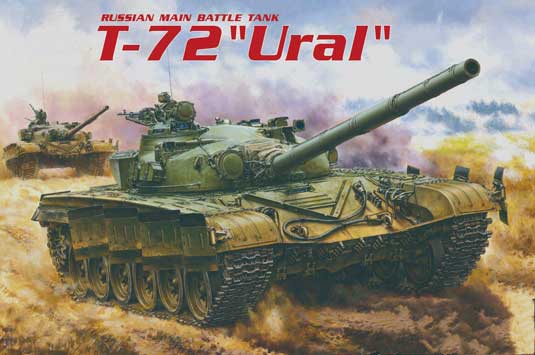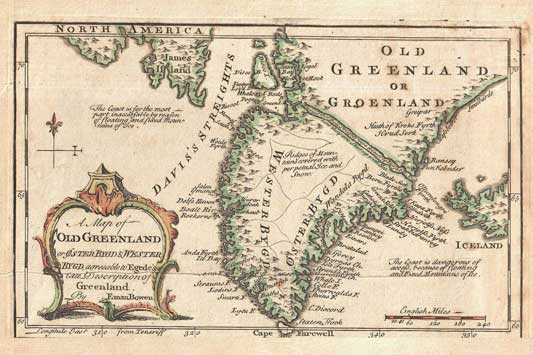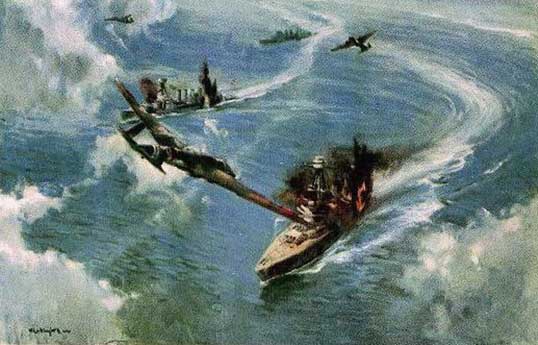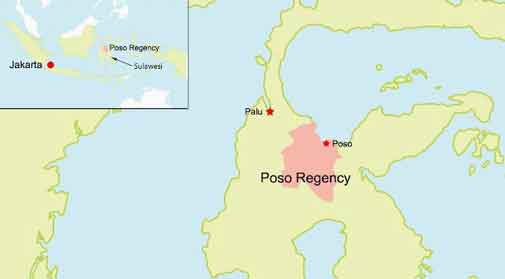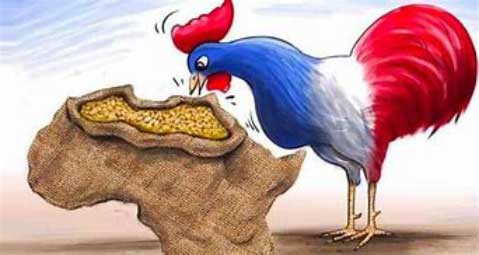Referendum kemerdekaan adalah jenis referendum di mana penduduk suatu wilayah memutuskan apakah wilayah tersebut harus menjadi negara berdaulat yang merdeka. Referendum kemerdekaan yang menghasilkan suara kemerdekaan tidak selalu menghasilkan kemerdekaan
ZONA PERANG(zonaperang.com) Negosiasi mengenai persyaratan referendum kemerdekaan dapat dilakukan antara kaum nasionalis dan pemerintah yang menjalankan kedaulatan atas wilayah tersebut. Apabila syarat-syaratnya dapat disepakati, maka referendum kemerdekaan dapat dilaksanakan dengan hasil yang mengikat dan dihormati oleh masyarakat internasional.
Referendum kemerdekaan dapat diadakan tanpa persetujuan pemerintah nasional atau federal, sehingga komunitas internasional akan bergantung pada beberapa faktor lain, misalnya. apakah masyarakat setempat ditindas oleh pemerintah pusat atau tidak, tinggal menentukan apakah akibatnya bisa diakui atau tidak.
Deklarasi kemerdekaan
Jika terjadi pemungutan suara untuk kemerdekaan, mungkin ada negosiasi mengenai persyaratan pemisahan wilayah dari negara berdaulat. Deklarasi kemerdekaan suatu negara baru kemudian dibuat, dan pengakuan internasional dapat menyusul, begitu pula keanggotaan organisasi internasional seperti Perserikatan Bangsa-Bangsa. Dalam kasus-kasus yang melibatkan referendum yang tidak mengikat, hal ini dapat mengarah pada deklarasi kemerdekaan sepihak, dan oleh karena itu merupakan negara-negara yang diakui sebagian atau memproklamirkan diri, seperti referendum status Donbas.
Jika terjadi pemungutan suara yang menentang kemerdekaan, mungkin masih terdapat gerakan nasionalis yang kuat dan menyerukan diadakannya kembali referendum kemerdekaan. Misalnya, setelah dua referendum di Quebec, Parti Québécois terus meningkatkan kemungkinan diadakannya referendum lagi, dan Partai Nasional Skotlandia mengatakan bahwa referendum tahun 2014 harus diulangi setelah Inggris keluar dari negaranya. Uni Eropa.
Baca juga : 22 Oktober 1945, Hari Santri : Fatwa Resolusi Jihad Ulama untuk Kemerdekaan Indonesia
Daftar negara yang menyelenggarakan referendum
Catatan ini membahas referendum kemerdekaan di seluruh dunia dan referendum mengenai pengaturan konstitusional lainnya sebelum kemerdekaan penuh pada abad ke-20 dan ke-21. Pencapaian kemerdekaan dianggap sebagai keanggotaan PBB. Dengan demikian, Kosovo yang belum diakui oleh seluruh Negara Anggota PBB tidak dianggap merdeka meskipun terdapat suara mayoritas yang mendukung kemerdekaan.
Daftar ini tidak lengkap; hal ini tidak mencakup seluruh referendum di wilayah bawahan atau sebagian besar referendum tidak resmi dan konsultatif mengenai hubungan konstitusional.
-
Referendums on independence
|
Country |
Date of Referendum |
UN member |
Time gap |
Independence declared |
Comments |
|
AFRICA |
|||||
|
Algeria |
01/07/1962 |
8/10/1962 |
3.5 mths |
July 1962 |
1850s came under French control. France voted 8 January 1961 and 8 April 1962: on self- determination (independent statehood) for Algeria |
|
Comoros |
22/12/1974: 94.6% in favour. Mayotte voted to remain French |
12/11/1975 |
6.5 mths |
06/07/1975 |
1912: Three islands forming Comoros were declared French colony. 1914-1947 + Mayotte administratively attached to Madagascar. 1947: the four islands became French Overseas Territory. 1961: the Territory achieved internal self-government. 1974: referendum on independent statehood 1975 Comoros declared independence. |
|
Eritrea |
23-25/04/1993 |
28/5/1993 |
1 mth |
24/05/1993 |
Referendum was on whether to separate from Ethiopia. |
|
South Sudan |
9-15/01/2011: 98.8% voted in favour. |
14/07/2011 |
6 mths |
09/07/2011 |
Until 1946 South Sudan was administered separately from the North under Egyptian and British rule. 1946: British unified the regions. 1956: Sudan gained in- dependence as single state on understanding that the southerners would participate fully in the political system. 1955-1972 and 1983-2005: two periods of conflict as a result of southerners not being able to participate fully. |
|
Country |
Date of Referendum |
UN member |
Time gap |
Independence declared |
Comments |
|
Southern autonomous government formed 2005. 2011: referendum on whether to separate from Republic of Sudan held under 2005 Comprehensive Peace Agreement, which expired soon afterwards, leaving many issues unresolved to this day, although fragile agreements have been reached on some of them e.g. oil. |
|||||
|
Djibouti (French Somaliland) |
19/03/1967: 60% voted for continued association with France rather than independence. |
20/09/1977 |
10 yrs 6 mths |
June 1977 |
In spite of the 1967 referendum result, France affirmed that Overseas Territory of the Afars and the Issas was destined for independence but no date was fixed. |
|
EUROPE (East and West) |
|||||
|
Norway |
13/08/1905 |
27/11/1945 |
40 yrs 3 mths |
26/10/1905 |
August 1905: men only referendum on whether the Norwegian people approved of ending union with Sweden. October 1905: King Oscar of Sweden renounced Norwegian throne and union dissolved. |
|
Iceland |
20-23/05/1944 |
19/11/1946 |
2 yrs 6 mths |
17/06/1944 |
Referendum on whether to abolish Act of Union with Denmark and adopt republican constitution. |
|
Estonia |
03/03/1991: 78.4% approved independence from USSR. |
17/09/1991 |
6 mths |
September 1991 |
|
|
Latvia |
03/03/1991: 75% approved independence from USSR. |
17/09/1991 |
6 mths |
6/9/1991 |
|
|
Croatia* |
19/05/1991 on independence from SFRY. |
22/05/1992 |
1 year |
25/06/1991 (came into effect 08/10/1991) |
1918-1929, country known as Kingdom of the Serbs, Croats and Slovenes formed after Croats forced to join Serbia and Montenegro. 1921 Constitution established an assembly but still a gulf between Serbs and Croats. 1929 Constitution suspended by King who established royal dictatorship and renamed state Yugoslavia. |
|
Country |
Date of Referendum |
UN member |
Time gap |
Independence declared |
Comments |
|
After WWII Soviet-type constitution set up in Yugoslavia. June 1991 Croatia and Slovenia declared independence. October 1991 following expiration of three-month moratorium agreed at EU peace talks in June 1991, Croatia and Slovenia declared independence from the Yugoslav federation. Jan. 1992: EU recognised Croatia and Slovenia as independent states. |
|||||
|
Slovenia* |
23/12/1990 |
22/05/1992 |
1 yr 5 mths |
25/06/1991 |
(see Croatia, above) 1990 referendum on whether to secede from Socialist Federal Republic of Yugoslavia and be independent republic (SFRY) |
|
Malta |
2-4 May 1964 on new constitution: approved by 54.5% to 45.5%. |
1/12/1964 |
6 mths |
21/9/1964 |
This was effectively an independence referendum as the new constitution made Malta an independent state. |
|
The former Yugoslav Republic of Macedonia (FYROM)* |
08/09/1991 |
08/04/1993 |
1 yr 7 mths |
20/11/1991 |
1918: Yugoslav Macedonia incorporated into Serbia as South Serbia, becoming a republic in the Socialist Federal Republic of Yugoslavia. September 1991: Macedonia declared independence after a referendum. 20 November 1991: new Constitution adopted, which proclaimed the ‘Republic of Macedonia’ as sovereign and independent state. March 1992: peaceful withdrawal of Yugoslav army from its territory negotiated. Macedonia was only country to secede from Yugoslav federation peacefully. |
|
Montenegro* |
21/05/2006 |
28/06/2006 |
1 mth 1 week |
03/06/2006. Recognised by Serbia 15/6/2006 |
1918-1929: Kingdom of Serbs, Croats and Slovenes formed after Croats forced to join Serbia and Montenegro. 1921: Constitution established assembly but still a gulf between Serbs and Croats. 1929: King suspended Constitution and established royal dictatorship, renaming the state Yugoslavia. After |
|
Country |
Date of Referendum |
UN member |
Time gap |
Independence declared |
Comments |
|
liberation from Germany, Soviet-type constitution established in Yugoslavia. April 1992: Serbia and Montenegro created new Federal Republic of Yugoslavia. 2003: looser union of Serbia and Montenegro formed. 4 February 2006: Serbia and Montenegro gained right to vote for independence. May 2006: Referendum on independence. |
|||||
|
Kosovo |
Independence referendum 26 & 30 September 1991: 99.98% voted for independence. Serbs living in the region (around 10% of population) boycotted referendum. |
February 2008: Kosovans declare Kosovo’s independence |
There has been a long- running political and territorial dispute between the Serbian (previously Yugoslav) government and Kosovo’s largely Albanian population. After Kosovo War and 1999 NATO bombing of Yugoslavia, Kosovo came under UN Mission in Kosovo (UNMIK), mostly administered by EU Rule of Law Mission (EULEX). February 2008: Kosovar representatives unilaterally declared Kosovo’s independence. 8/10/2008: at Serbia’s request, UN General Assembly adopted resolution asking Inter-national Court of Justice for advisory opinion on Kosovo’s declaration of independence. 22/7/2010: ICJ ruled that it did not violate general international law or UN Security Council Resolution 1244. Kosovo’s independence: by end 2012 recognised by 98 out of 193 UN Member States. EU-mediated talks between Kosovo and Serbia on 20/3/2013. |
||
|
Bosnia- Herzegovina* |
15/10/91: declaration of sovereignty. 29 Feb–1 Mar 1992: Independence from rump SFRY: 99% approved (boycotted by most Serbs). |
22/05/1992 |
7 mths |
3/3/1992 |
3 March 1992: Bosnia and Herzegovina becomes an independent state – but Bosnian Serbs had declared their own ‘Republika Srpska’ on 9 January 1992 following a referendum in November 1991, leading to war. On initial proclamation of independence in 1992 the |
|
Country |
Date of Referendum |
UN member |
Time gap |
Independence declared |
Comments |
||||
|
country’s official name was the Republic of Bosnia and Herzegovina but following the 1995 Dayton Agreement and the new Constitution the name was officially changed to Bosnia and Herzegovina. The General Framework Agreement for Peace in Bosnia and Herzegovina (also known as the Dayton Agreement, Dayton Accords, Paris Protocol or Dayton- Paris Agreement) was a peace agreement reached at Wright-Patterson Air Force Base near Dayton, Ohio, in November 1995, and formally signed in Paris on 14 December 1995. Dayton was not an independence agreement but it ended the war in Bosnia and allowed independence in practice. |
|||||||||
|
* The Socialist Federal Republic of Yugoslavia was an original Member of the United Nations until its dissolution following the establishment and subsequent admission as new Members of Bosnia and Herzegovina, the Republic of Croatia, the Republic of Slovenia, The former Yugoslav Republic of Macedonia, and the Federal Republic of Yugoslavia. (From United Nations website) |
|||||||||
|
Lithuania |
08/02/1991 |
17/09/1991 |
7 mths 1 week |
06/09/1991 |
1991: Independence from USSR. 93.2% approved. |
||||
|
Ukraine |
01/12/1991 |
24/10/1945 |
26/12/1991 |
Ukrainian SSR was a founding member of UN, as result of Western agreement with USSR, which wanted UN seats for all its 15 republics. 16 October 1990: Ukrainian Parliament adopted declaration of sovereignty, proclaiming the supremacy of Ukrainian law over Soviet Union law. This laid the foundations for the Act of Declaration of Independence, passed by the Parliament on 24 August 1991. 1991: 90.3% approved & confirmed Act of Independence |
|||||
|
CAUCASUS |
|||||||||
|
Armenia** |
21/09/1991 |
02/03/1992 |
5 mths |
21/09/1990 |
1990: Declaration of independence. 1991: Referendum 99.2% approved. Official Independence day 23/9/1991. |
||||
|
Azerbaijan** |
10/12/1991 |
2/3/1992 |
2 mths |
18/10/1991 |
29 December 1991: Independence was confirmed at a referendum on |
||||
|
Country |
Date of Referendum |
UN member |
Time gap |
Independence declared |
Comments |
|
independent statehood: 99.8% approved The process of international recognition of Azerbaijan’s independence from the collapsing Soviet Union lasted roughly a year. Supreme Soviet of Azerbaijan formally adopted declaration of independence. Moscow said the declaration was invalid in November 1989. Came into effect with dissolution of Soviet Union. The state joined the UN in 1992. |
|||||
|
Georgia** |
31/03/1991 |
31/07/1992 |
1 yr 4 mths |
9/4/1991 |
The Treaty of Moscow between Soviet Russia and the Democratic Republic of Georgia in Moscow on 7 May 1920 granted Georgia de jure recognition of independence in exchange of the promise not to grant asylum on Georgian soil to the troops of powers hostile to Bolshevik Russia. This lasted until February 1921, when it was attacked by Soviet Russia. 1991: Question asked “Do you support the restoration of the independence of Georgia in accordance with the Act of Declaration of Independence of Georgia of May 26, 1918?” 99.5% approved |
|
** Georgia, Armenia and Azerbaijan created a unified regional authority known as the Transcaucasian Commissariat on 14 November 1917, and a legislature, the Sejm, on 23 January 1918. On 22 April 1918, the Sejm declared the Transcaucasus an independent democratic federation. The Federation collapsed on 26 May 1918, when Georgia declared independence, followed by Armenia and Azerbaijan. |
|||||
|
CENTRAL ASIA |
|||||
|
Turkmenistan |
26/10/1991: 94.1% approved independence. |
02/03/1992 |
4 mths |
August 1990: declared independence. Officially confirmed 27/10/1991. |
. |
|
Uzbekistan |
29/12/1991: 98% approved independence. |
02/03/1992 |
2 mths |
31/08/1991 |
|
|
Country |
Date of Referendum |
UN member |
Time gap |
Independence declared |
Comments |
|
FAR EAST & PACIFIC |
|||||
|
Mongolia |
20/10/1945: |
27/10/1961 |
16 yrs |
(i) 11/7/1921: |
When the Qing Dynasty fell, |
|
independent |
Mongolia declared |
||||
|
communist |
independence in 1911. |
||||
|
Mongolia. |
However, the Republic of |
||||
|
China considered Mongolia |
|||||
|
(ii) 26/11/1924: |
to be part of its own territory. |
||||
|
first Mongolian |
The area controlled by the |
||||
|
Constitution. |
Bogd Khaan was roughly that |
||||
|
of the former Outer Mongolia |
|||||
|
(iii) 6/10/1949 |
during the Qing period. In |
||||
|
1919, after the October |
|||||
|
(iv) 14/02/1950: |
Revolution in Russia, |
||||
|
China |
Chinese troops led by Xu |
||||
|
recognised |
Shuzheng occupied |
||||
|
Mongolia’s |
Mongolia. |
||||
|
independence. |
White Russian adventurer |
||||
|
Baron Ungern entered |
|||||
|
Mongolia in October 1920, |
|||||
|
defeating Chinese forces in |
|||||
|
Ulaanbaatar early February |
|||||
|
1921. Bolshevik Russia |
|||||
|
supported a communist |
|||||
|
Mongolian government and |
|||||
|
army. This army took the |
|||||
|
Mongolian part of Kyakhta |
|||||
|
from Chinese forces on 18 |
|||||
|
March 1921. |
|||||
|
11 July 1921 Mongolia |
|||||
|
declared independence. (But |
|||||
|
remained closely aligned with |
|||||
|
the Soviet Union until 1945.) |
|||||
|
1945: Referendum: 100% |
|||||
|
voted for independence from |
|||||
|
China. |
|||||
|
1946 China officially |
|||||
|
recognised Outer Mongolia’s |
|||||
|
independence. |
|||||
|
Samoa |
9/5/1961 |
15/12/1976 |
15 yrs |
1/1/1962 |
In 1946 Samoa (known as |
|
7 mths |
Western Samoa until July |
||||
|
1997) was made a UN Trust |
|||||
|
Territory, with New Zealand |
|||||
|
continuing as the |
|||||
|
administering power. From |
|||||
|
1954 measures of internal |
|||||
|
self-government were |
|||||
|
gradually introduced. This |
|||||
|
culminated in an |
|||||
|
independence constitution |
|||||
|
being adopted by a |
|||||
|
constitutional convention on |
|||||
|
28 October 1960. This was |
|||||
|
approved by a UN- |
|||||
|
supervised referendum in |
|||||
|
May 1961 and the island |
|||||
|
became independent on 1 |
|
Country |
Date of Referendum |
UN member |
Time gap |
Independence declared |
Comments |
|
January 1962. A constitutional amendment adopted in July 1997 shortened the country’s name to Samoa. |
|||||
|
Kiribati |
July-Sept 1974 |
14/09/1999 |
25 yrs |
12/07/1979 |
1892: Gilbert Islands proclaimed a British protectorate. 1916: joined with Ellice Islands and annexed, at request of native government, as the Gilbert and Ellice Islands Colony. October 1975: Ellice Islands severed constitutional links with Gilbert Islands and took new name Tuvalu (see below). 12 July 1979: after constitutional conference in London, Gilbert Islands became the independent Republic of Kiribati. |
|
Tuvalu |
July-Sept 1974 |
05/09/2000 |
26 yrs |
October 1978 |
1916: former Ellice Islands joined with Gilbert Islands. 1974: a referendum produced a large majority in favour of separation from the Gilbert Islands. A constitutional referendum was held in Tuvalu on 30 April 2008: The referendum sought to abolish the monarchy of Tuvalu and establish the country as a republic. Had the referendum passed, the new president would be indirectly elected by the Parliament of Tuvalu. The electorate voted to retain the monarchy, with Elizabeth II as Head of State. |
|
SOUTH EAST ASIA |
|||||
|
East Timor/Timor- Leste |
30/08/1999: |
27/09/2002 |
3 yrs 1 mth |
20/05/2002 |
1975: former colony abandoned by Portugal when occupied by Indonesia and claimed as the province of Timor Timur. UN did not recognise Indonesian sovereignty over the territory. August 1998: Indonesia and Portugal reached agreement on autonomy plan giving Timorese the right to self- |
|
Country |
Date of Referendum |
UN member |
Time gap |
Independence declared |
Comments |
|
government except in foreign affairs and defence. 1999: referendum held on future of Timor-Leste. 78.5% of 99% turnout of voters opted for independence, but pro-Indonesian militias accused UN of rigging the poll. May 2002 Timor-Leste became an independent country but unrest continued. |
|||||
|
Cambodia |
3/10/1945: 100% approval |
14/12/1955 |
8 yrs 1 mth |
9/11/1953 |
In 1863 the king of Cambodia placed the country under French protection and it became part of French Indochina in 1887. Following Japanese occupation in World War II, it became independent within the French Union in 1949 and fully independent in 1953. |
|
CARIBBEAN & UNITED STATES |
|||||
|
St Vincent and the Grenadines |
25/11/2009 |
16/09/1980 |
27/10/1979 |
October 1969: St Vincent became an Associated State with the UK responsible for foreign policy and defence. 25 November 2009: referendum to approve new constitution which proposed becoming a republic, replacing Queen Elizabeth II as head of state with a non- executive President. Electorate voted against proposal by 55.64% to 43.13%. |
|
|
Jamaica |
19/09/1961 |
18/09/1962 |
1 yr |
06/08/1962 |
1655: captured from Spanish by the English 1866: Crown Colony government introduced. 1944: Constitution introduced elected house of representatives, a legislative council and executive council. 1958: joined with Trinidad, Barbados, Leeward Islands and Windward Island to form West Indies Federation. 1959: internal self- government achieved. 1961: Referendum on continued membership of |
|
Date of Referendum |
UN member |
Time gap |
Independence declared |
Comments |
|
|
Federation of the West Indies. 54.1% voted No, resulting in the country leaving the federation and its dissolution in 1962. 1962: became independent state in British Commonwealth. |
Baca juga : (Seri – Republik Indonesia Serikat) Negara Madura
-
Referendums in which a majority voted against independence
|
Country |
Date of referendum |
Comment |
|
Quebec |
(i)20/5/1980: secession from Canada defeated by 59.6% to 40.4%.
(ii) 30/10/1995: secession defeated by 50.6% to 49.4%. |
The 1980 referendum was called by the Parti Québécois (PQ) government, which strongly supported secession from Canada. The proposal was to negotiate an agreement with the rest of Canada that would give Quebec the exclusive power to make its laws, levy its taxes and establish relations abroad, while maintaining with Canada an economic association, including a common currency. The1995 question, unlike the 1980 one, proposed sovereignty and an optional partnership offer to the rest of Canada. The question asked whether the electorate agreed that “Quebec should become sovereign after having made a formal offer to Canada for a new economic and political partnership within the scope of the bill respecting the future of Quebec and of the agreement signed on June 12, 1995”. The Tripartite Agreement on Sovereignty, signed on 12 June 1995 was sent to every household in Quebec before the vote. |
|
New Caledonia |
13/9/1987: 98.3% voted to stay with France; 1.7% for independence. |
New Caledonia is a special collectivity of France. Under the 1998 Nouméa Accord, New Caledonia is to hold a second referendum on independence between 2014 and 2018. |
|
Guam |
|
The US took control of the island in the 1898 Spanish-American War under Treaty of Paris (1898). It was occupied by Japan in early 1940s and recaptured by the US in 1944. The Guam Organic Act (1950) established Guam as an unincorporated organised territory of US. |
|
Bermuda |
16/8/1995: 73.6% voted against independence, 25.7% in favour. |
Bermuda made Crown Colony in 1609; became a self-governing colony in 1620. In 1968 Bermuda gained a constitution, but UK Government decided Bermuda not ready for independence. Bermuda included on UN list of Non-Self-Governing Territories. 1981: Bermuda became British Dependent Territory |
|
Puerto Rico |
Commonwealth, 39% statehood and 0.6% independence.
|
United States acquired the islands of Puerto Rico in 1898 after Spanish-American War. Puerto Rico is an ‘unincorporated territory’ of the US, but not a part of the US. Four Puerto Rican status referendums have been held to determine political status of Puerto Rico in relation to the US. A further referendum in 1991 sought to amend the relationship through an amendment to Puerto Rican Constitution. All the referendums favoured retaining current status over independence and statehood alternatives. In 2006, 2009 and 2011, the UN Special Committee on Decolonization called for US to expedite the process to allow self-determination in Puerto Rico |
|
statehood and 4.4% independence.
statehood, 2.5% independence, 0.3% free association (sovereign nation separate from, but legally bound to US), and 0.1 Commonwealth; 50.3% voted for none of these.
statehood, 33.3% free association and 5.5% |
||
|
Northern Mariana Islands (see also above) |
17/6/1975 status referendum: becoming a US commonwealth approved by 79% of voters. |
After defeat of Japan in WW2, the islands administered by US as part of UN Trust Territory of the Pacific Islands. Four referendums were held on integration with Guam or the islands’ status in 1958, 1961, 1963 and 1969. Each time a majority voted for integration with Guam, but this did not happen and Guam rejected integration in a 1969 referendum. The people of Northern Mariana Islands decided in 1970s not to seek independence, but to forge closer links with US. Negotiations for territorial status began in 1972. In 1974 negotiations between US and the Marianas Political Status Commission produced “Covenant to Establish a Commonwealth of the Northern Marianas.” 1 September 1974: Marianas Legislature approved Covenant and arranged for public referendum, which approved it on 17 June 1975. 1978: negotiations began on Northern Marianas Covenant. US President Carter approved new constitution in 1977. |
|
Montenegro |
1/3/1992: 96% voted to remain with Yugoslavia. |
The question asked if there was support for Montenegro remaining a part of a united Yugoslavia, as a sovereign republic and equal to all other Yugoslav republics that wish to remain in unity. |
Baca juga : 26 Maret 1971, Pakistan Timur memproklamirkan kemerdekaannya dan berganti nama menjadi Bangladesh
Baca juga : AS Tekan Belanda Agar Akui Kemerdekaan dan Kedaulatan RI


